
Overview
The maritime and oceanography industry by measuring wind speed and direction at sea. These instruments are essential for ensuring the safety of ships, offshore platforms, and oceanographic research vessels navigating through varying weather conditions. By providing real-time data on atmospheric dynamics, anemometers aid in accurate weather forecasting, enabling efficient route planning and risk mitigation strategies for maritime operations. In oceanography, anemometers contribute to understanding air-sea interactions, climate patterns, and ocean currents, facilitating research on marine ecosystems and environmental changes. With advancements in technology, modern anemometers offer enhanced accuracy and reliability, supporting scientific investigations and marine activities worldwide. As indispensable tools in the maritime and oceanographic domains, anemometers continue to drive advancements in navigation safety, weather prediction, and marine research, shaping our understanding of the dynamic forces shaping our oceans and atmosphere.
Depending on specific features and functions, GAO Tek’s anemometers are sometimes referred to as wind meters, wind speed sensors, air flow meters, wind velocity gauges, wind monitors, wind detectors, breeze meters, and wind vanes.
Furthermore, GAO Tek’s anemometers are further grouped into:
air speed and humidity measurement, air volume measurement, temperature and humidity measurement, wind chill measurement, benchtop, cup, dust and waterproof, handheld, high-precision, hot-wire, industrial, pressure, rugged wind gauges, thermal, ultrasonic, weather monitoring, wind speed and direction gauges, and wind vane.
GAO Tek’s anemometers have the following applications in the maritime and oceanography industry:
- Navigation: GAO’s anemometers heavily rely on accurate navigation systems for safe and efficient transportation of goods and passengers across water bodies. Navigation encompasses various technologies such as GPS, radar, sonar, and charts, which aid in route planning, collision avoidance, and ensuring vessels adhere to international maritime regulations.
- Weather Forecasting: GAO Tek’s anemometers understanding and predicting weather patterns are critical for maritime operations to avoid hazardous conditions such as storms, heavy fog, or hurricanes. Oceanographic data, including sea surface temperature, currents, and wind patterns, is collected through buoys, satellites, and research vessels, contributing to the development of accurate weather forecasts and warnings for sailors and coastal communities.
- Climate Research: Our anemometers in the ocean play a crucial role in regulating Earth’s climate, absorbing heat and carbon dioxide from the atmosphere. The maritime and oceanography industries are involved in studying long-term climate trends, ocean circulation patterns, and their impact on global climate systems. This research aids in understanding climate change phenomena and developing strategies for mitigating its effects on marine ecosystems and coastal regions.
- Resource Exploration and Management: GAO Tek’s anemometers engage in the exploration and extraction of various resources, including oil, gas, minerals, and renewable energy sources such as wind and tidal power. Oceanographic data assists in locating potential resource-rich areas, assessing environmental impacts, and implementing sustainable management practices to ensure responsible utilization of marine resources while minimizing ecological disruption.
- Environmental Monitoring and Conservation: GAO’s anemometers are used for monitoring the health of marine ecosystems and coastal environments are essential for preserving biodiversity and mitigating human-induced impacts such as pollution, habitat destruction, and overfishing. Maritime and oceanography industries contribute to environmental monitoring through initiatives like water quality assessments, marine biodiversity surveys, and ecosystem modeling, aiding in the formulation of conservation policies and marine protected areas management.
- Scientific Research and Exploration: Using our anemometers, the ocean remains one of the least explored frontiers on Earth, harboring unique ecosystems, geological features, and biodiversity. Maritime and oceanography industries support scientific research and exploration endeavors, including deep-sea exploration, marine biology studies, and geological surveys. Advanced technologies such as remotely operated vehicles (ROVs), autonomous underwater vehicles (AUVs), and manned submersibles enable scientists to conduct interdisciplinary research and discover new insights into the ocean’s mysteries.
- Defense and Security: GAO Tek’s anemometers are used for maritime security and are paramount for safeguarding national borders, and maritime infrastructure, and preventing illicit activities such as piracy, smuggling, and illegal fishing. The maritime industry collaborates with defense agencies to develop surveillance systems, maritime patrols, and response protocols to address security threats and maintain maritime domain awareness. Oceanographic data also aids in strategic planning for naval operations and disaster response efforts in maritime environments.
More information on anemometers and their applications in other industries can be found on
This category page lists related products
Systems in the Maritime and Oceanography Industry utilizing Anemometers
Here are some popular systems in the maritime and oceanography industry using anemometers:
Ship Weather Monitoring Systems:
- Ship weather monitoring systems integrate anemometers to measure wind speed and direction, providing vital data for navigation and safety at sea. These systems often include additional sensors to monitor other weather parameters such as temperature, humidity, and barometric pressure. Data collected by the anemometer helps ship captains and crew makes informed decisions regarding route planning, adjusting sail configurations, and avoiding adverse weather conditions to ensure the safety of the vessel and its cargo.
Offshore Platform Weather Monitoring Systems:
- Anemometers are essential components of weather monitoring systems installed on offshore platforms, including oil rigs, wind farms, and research stations. These systems continuously measure wind characteristics to assess environmental conditions, evaluate wind energy potential, and monitor operational safety. Anemometer data aids in optimizing the positioning and operation of offshore structures, ensuring stability and reliability in challenging marine environments.
Oceanographic Buoy Networks:
- Oceanographic buoys deployed at sea utilize anemometers to gather real-time meteorological data as part of ocean monitoring networks. These buoys are equipped with a range of sensors to measure parameters such as sea surface temperature, wave height, and wind speed. Anemometer data contributes to understanding air-sea interactions, atmospheric circulation patterns, and climate dynamics, supporting research efforts in oceanography, meteorology, and climate science.
Research Vessel Instrumentation:
- Research vessels engaged in oceanographic expeditions and scientific surveys incorporate anemometers into their instrumentation suites to characterize marine environments and study atmospheric processes. Anemometer measurements help researchers assess local and regional wind patterns, investigate air-sea fluxes of heat and moisture, and analyze the impact of weather systems on oceanographic phenomena. These data are critical for advancing our understanding of ocean-atmosphere interactions and their influence on global climate systems.
Coastal Monitoring Stations:
- Coastal monitoring stations and weather observation sites along coastlines utilize anemometers to gather wind data for coastal management, environmental monitoring, and hazard assessment purposes. These stations provide valuable information for coastal planning, maritime operations, and coastal zone management initiatives. Anemometer measurements assist in assessing wind resources for renewable energy development, evaluating coastal erosion risks, and predicting storm surge impacts on vulnerable coastal communities.
Marine Weather Forecasting Systems:
- Anemometers are integral components of marine weather forecasting systems used by meteorological agencies and maritime authorities to provide accurate and timely weather information for mariners and coastal communities. These systems utilize anemometer data, along with data from other meteorological sensors and numerical weather prediction models, to generate forecasts of wind conditions, sea states, and weather phenomena such as storms, squalls, and fronts.
Oceanographic Research Instrumentation:
- Anemometers are employed in oceanographic research instrumentation deployed on autonomous underwater vehicles (AUVs), gliders, and profiling floats to characterize upper-ocean turbulence and air-sea interaction processes. These instruments measure wind speed and direction near the ocean surface, providing valuable data for studying ocean-atmosphere coupling, air-sea fluxes of momentum and heat, and their impact on ocean circulation and climate variability.
GAO Tek’s targeted markets are North America, particularly the U.S. and Canada.
Complying with Government Regulations
GAO Tek’s anemometers comply or help our customers comply with the U.S. government regulations such as:
- International Maritime Organization (IMO) regulations
- National Oceanic and Atmospheric Administration (NOAA) requirements
- United States Coast Guard (USCG) standards
- Environmental Protection Agency (EPA) guidelines
- Occupational Safety and Health Administration (OSHA) regulations
- International Organization for Standardization (ISO) standards
- Federal Aviation Administration (FAA) regulations
- National Marine Fisheries Service (NMFS) guidelines
- Bureau of Ocean Energy Management (BOEM) requirements
- National Weather Service (NWS) protocols
GAO Tek’s anemometers comply or help our clients comply with the Canadian regulations such as:
- Transport Canada regulations
- Fisheries and Oceans Canada requirements
- Canadian Coast Guard standards
- Environment and Climate Change Canada guidelines
- Canadian Environmental Assessment Agency (CEAA) regulations
- Canadian Hydrographic Service (CHS) protocols
- Canadian Standards Association (CSA) standards
- Canadian Environmental Protection Act (CEPA) regulations
- Canadian Energy Regulator (CER) guidelines
- Canada-Newfoundland and Labrador Offshore Petroleum Board (C-NLOPB) requirements
Case Studies of Anemometers in the Maritime and Oceanography Industry
Anemometers are sometimes called wind meters, wind speed sensors, air flow meters, wind velocity gauges, wind monitors, wind detectors, breeze meters, and gust detectors.
Here are some practical examples of using anemometers in the maritime and oceanography industry:
Anemometers are essential tools for optimizing maritime operations along the Northeast coast of the United States, particularly in New York, where varying coastal environments and terrain influence wind patterns. By accurately measuring wind speeds and directions, maritime authorities can strategically plan vessel routes, port operations, and offshore activities to enhance safety and efficiency.
In the Northeast region of Washington, anemometers play a crucial role in assessing wind resources for offshore maritime operations, including shipping, fishing, and recreational boating. By understanding wind patterns over the ocean, maritime stakeholders can make informed decisions about maritime infrastructure development, navigation safety, and offshore resource utilization.
In the Midwest region of New York, anemometers are utilized to assess wind resources for inland maritime operations along the Great Lakes and inland waterways. By measuring wind speeds and directions, these instruments aid in optimizing shipping routes, port operations, and recreational boating activities, enhancing efficiency and safety in the region’s maritime transportation sector.
In the Southern region of Florida, anemometers are deployed along coastal areas to assess wind energy potential for maritime applications such as offshore wind farms and marine transportation. This data aids in evaluating the feasibility of renewable energy projects, optimizing vessel routes, and enhancing maritime navigation in coastal waters.
Offshore in the West, anemometers are utilized to monitor wind speeds and directions for maritime operations such as shipping, offshore drilling, and marine research. This information helps maritime stakeholders assess weather conditions, plan vessel routes, and ensure the safety of offshore activities in the region.
Anemometers are deployed in the Canada that are utilized to assess wind resources for inland maritime operations along the Great Lakes and inland waterways. This data supports navigation safety, ice management, and environmental monitoring efforts in remote and challenging marine environments, contributing to the sustainable management of Canada’s marine resources.
In the Canadian Arctic, anemometers play a critical role in supporting maritime activities such as ice navigation, resource exploration, and marine research. By providing accurate wind data, these instruments assist in understanding weather patterns, ice drift dynamics, and oceanographic processes in the Arctic marine environment, contributing to sustainable maritime development and environmental stewardship in Canada’s northern regions.
GAO RFID Inc. RFID Hardware, a sister company of GAO Tek Inc., is ranked as a top 10 RFID suppliers in the world. Its RFID, BLE, and IoT products have also been widely used in the maritime and oceanography industry. Articles about related industries are given below:
Agriculture, Fisheries and Forestry Industry
Use of Anemometers with Leading Software and Cloud Services in the Maritime and Oceanography industry
GAO Tek has used or has facilitated its customers to use GAO’s anemometers with some of the leading software and cloud services in their applications. Examples of such leading software and cloud services include:
- Heroku
- Tencent Cloud
- NetApp Cloud Volumes
- Nutanix Clusters
- Docker Cloud
- Cisco Meraki
- Red Hat OpenShift
- Rackspace Cloud
- Adobe Experience Cloud
- Cloud Foundry
- Salesforce Platform
- Alibaba Cloud
- SAP Cloud Platform
- Digital Ocean
- VMware Cloud
GAO Tek’s anemometers and their applications in other industries are listed on
Other related products can be found on this category page
Meeting Customers’ Demands
Large Choice of Products
In order to satisfy the diversified needs of their corporate customers, GAO Tek Inc. and its sister company GAO RFID Inc. together offer a wide choice of testing and measurement devices, network products, RFID, BLE, IoT, and drones.
Fast Delivery
To shorten the delivery to our customers, GAO has maintained a large stock of its products and can ship overnight within the continental U.S. and Canada from the nearest warehouse.
Local to Our Customers
We are located in both the U.S. and Canada. We travel to customers’ premises if necessary. Hence, we provide very strong local support to our customers in North America, particularly the U.S. and Canada.
Furthermore, we have built partnerships with some integrators, consulting firms, and other service providers in different cities to further strengthen our services. Here are some of the service providers in the maritime and oceanography industry we have worked with to serve our joint customers:
- Maersk
- COSCO Shipping
- Mediterranean Shipping Company (MSC)
- CMA CGM
- Hapag-Lloyd
- Evergreen Marine
- China Shipping Container Lines (CSCL)
- Yang Ming Marine Transport Corporation
- Hyundai Merchant Marine (HMM)
- Orient Overseas Container Line (OOCL)
- ZIM Integrated Shipping Services
- Wan Hai Lines
- Pacific International Lines (PIL)
- Kawasaki Kisen Kaisha (K Line)
- Mitsui O.S.K. Lines (MOL)
- NYK Line (Nippon Yusen Kaisha)
- Hamburg Süd
- United Arab Shipping Company (UASC)
- Crowley Maritime Corporation
- Matson, Inc.
GAO has Many Customers in the Maritime and Oceanography Industry
The products from both GAO Tek Inc. and GAO RFID Inc. have been widely used in the maritime and oceanography industry by many customers, including some leading companies. Here is more information on applications of GAO RFID Inc.’s products in the maritime and oceanography industry. Articles about related industries are given below:
Agriculture, Fisheries and Forestry Industry
Here are some of GAO’s customers in the maritime and oceanography industry:
- Fugro
- Teledyne Marine
- Kongsberg Maritime
- Sonar dyne
- Subsea 7
- Schlumberger
- Seabed Geosolutions
- Ocean Infinity
- Triton Imaging
- RPS Group
- Oceaneering International
- Saipem
- TechnipFMC
- DOF Subsea
- Ocean view
- Ocean Power Technologies
- Marine Labs
- Seatronics
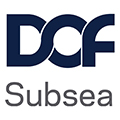
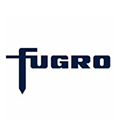



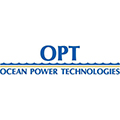
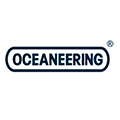

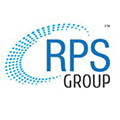
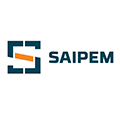


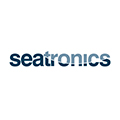

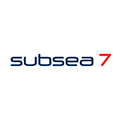
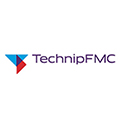
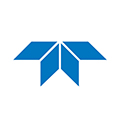
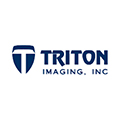
Contact Us
Here are GAO Tek’s anemometers and they are further organized by feature:
air speed and humidity measurement, air volume measurement, temperature and humidity measurement, wind chill measurement, benchtop, cup, dust and waterproof, handheld, high-precision, hot-wire, industrial, pressure, rugged wind gauges, thermal, ultrasonic, weather monitoring, wind speed and direction gauges, and wind vane.
If you have any questions about our products or want to place an order, our technical experts can help you.
Please fill out this form or email us.
